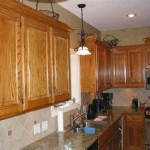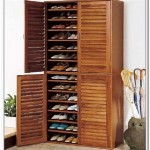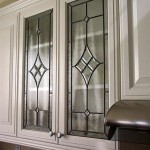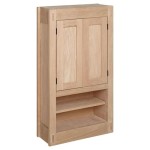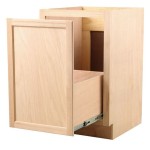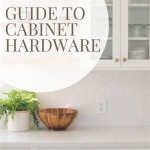```html
Creating Custom Cabinets For A Home Office
A well-organized home office is crucial for productivity and focus, particularly for individuals working remotely or managing personal affairs. Custom cabinets offer a tailored solution to optimize space, enhance functionality, and create a professional aesthetic, surpassing the limitations of prefabricated options. Designing and installing custom cabinets requires meticulous planning, careful execution, and a clear understanding of individual needs and spatial constraints.
The advantages of custom cabinets extend beyond mere storage. They provide an opportunity to integrate technology seamlessly, conceal unsightly cables, and create dedicated zones for specific tasks. Furthermore, custom solutions can be designed to accommodate unique architectural features, such as sloped ceilings or awkward corners, maximizing usable space. The investment in custom cabinetry often translates to increased home value and a more enjoyable and efficient work environment.
Assessing Needs and Defining Requirements
The initial step in creating custom cabinets involves a thorough assessment of needs and requirements. This process includes identifying the types of items to be stored, the frequency with which they are accessed, and the desired level of organization. Consider the dimensions of books, files, electronics, and other office supplies. Determine the number of drawers needed, the type of shelving required, and the presence of any specialized storage needs, such as a dedicated compartment for a printer or a secure area for sensitive documents.
Ergonomics play a significant role in cabinet design. The height of work surfaces, the accessibility of shelves, and the positioning of drawers should be carefully considered to promote comfort and reduce strain. For example, frequently used items should be placed within easy reach, while less frequently used items can be stored on higher or lower shelves. The depth of cabinets should also be considered to avoid unnecessary stretching or bending.
Consider the overall aesthetic of the home office and the desired style of the cabinets. Options range from traditional designs with raised panels and ornate hardware to contemporary styles with clean lines and minimalist details. The cabinet design should complement the existing furniture, flooring, and wall color to create a cohesive and visually appealing space. Gather inspiration from design magazines, online resources, and showroom visits to define preferences and refine the overall vision.
Budgetary constraints are another crucial factor to consider. Custom cabinets can range in price depending on the materials used, the complexity of the design, and the level of craftsmanship involved. Establish a realistic budget and prioritize features based on their importance. Obtain quotes from multiple cabinet makers to compare pricing and ensure competitive bidding. Be prepared to make trade-offs, such as choosing less expensive materials or simplifying the design, to stay within budget.
Selecting Materials and Finishes
The choice of materials significantly impacts the durability, appearance, and cost of custom cabinets. Solid wood, plywood, and particleboard are the most common materials used in cabinet construction, each offering distinct advantages and disadvantages. Solid wood is prized for its strength, beauty, and longevity, but it is also the most expensive option. Plywood is a more affordable alternative that offers good stability and resistance to warping. Particleboard is the least expensive option, but it is also the least durable and susceptible to moisture damage.
The type of wood used can also affect the overall look and feel of the cabinets. Oak, maple, cherry, and walnut are popular choices, each with its unique grain pattern and color. Consider the existing décor of the home office and select a wood that complements the space. It is also important to consider the sustainability of the wood source. Look for wood that is certified by the Forest Stewardship Council (FSC) to ensure that it comes from responsibly managed forests.
Cabinet finishes play a crucial role in protecting the wood and enhancing its appearance. Paint, stain, and varnish are common options, each offering different levels of protection and aesthetic appeal. Paint provides a durable and opaque finish that can be easily customized to match any color scheme. Stain enhances the natural grain of the wood and provides a warm and inviting look. Varnish provides a clear and durable finish that protects the wood from scratches and moisture. Select a finish that is appropriate for the type of wood used and the desired aesthetic.
Hardware, such as knobs, pulls, and hinges, can significantly impact the overall look and feel of the cabinets. Choose hardware that complements the cabinet design and provides a comfortable and functional grip. Consider the finish of the hardware and ensure that it matches the other metal accents in the home office. Hinges should be durable and reliable, ensuring smooth and quiet operation of the cabinet doors. Soft-close hinges are a popular option that prevents slamming and extends the life of the cabinets.
The Design and Installation Process
Once the needs have been assessed and materials have been selected, the design process can begin. This typically involves working with a cabinet maker or designer to create detailed drawings and specifications for the cabinets. These drawings should include dimensions, materials, finishes, and hardware details. Review the drawings carefully and ensure that they meet all requirements before approving them for production.
The cabinet maker will then fabricate the cabinets based on the approved drawings. This process can take several weeks or even months, depending on the complexity of the design and the availability of materials. Once the cabinets are fabricated, they will be delivered to the home office for installation. The installation process typically involves removing any existing cabinets, preparing the walls, and installing the new cabinets.
Proper installation is crucial to ensure the longevity and functionality of the cabinets. The cabinets should be level and plumb, and all joints should be properly aligned. The hardware should be securely attached, and the doors and drawers should operate smoothly. It is important to hire a qualified and experienced installer to ensure that the job is done correctly. A poorly installed cabinet can lead to problems such as sagging shelves, misaligned doors, and premature wear and tear.
Electrical considerations are important if the custom cabinets will incorporate lighting or power outlets. Ensure that all electrical work is performed by a licensed electrician and that it complies with local building codes. Consider the placement of outlets and switches to ensure that they are easily accessible and do not interfere with the functionality of the cabinets. Incorporating under-cabinet lighting can provide task lighting for work surfaces and enhance the overall ambiance of the home office.
After the cabinets are installed, inspect them carefully to ensure that they meet all specifications and that there are no defects. Address any issues with the cabinet maker or installer promptly. Proper maintenance, such as regular cleaning and occasional touch-up repairs, will help to extend the life of the cabinets and keep them looking their best.
Consider incorporating organizational accessories within the custom cabinets to further enhance functionality. These accessories can include pull-out shelves, drawer dividers, file organizers, and wire management systems. These additions can help to maximize space and keep the home office clutter-free.
Finally, consider the resale value of the home. While custom cabinets are primarily for personal use and enjoyment, higher quality materials and construction can also raise the value of the home.
```
Custom Home Offices Office Built In Design Closet Factory

How To Diy Built In Cabinets For Home Office

Custom Home Offices Gallery Designed By Closet Factory

How To Diy Built In Cabinets For Home Office

Built In Office Cabinets To Make Remote Working Beautiful

How To Diy Built In Cabinets For Home Office

Custom Home Office Built In Cabinetry Dc And Nova My Closet Guys

How To Build Your Dream Home Office Closet Storage Concepts

Diy Home Office Built Ins Part 2

Build Office Builtins With Cabinets Honey Built Home
Related Posts

